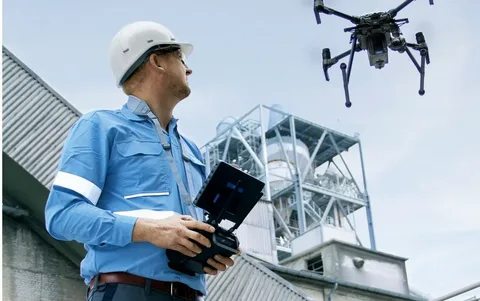
In today’s rapidly advancing technological landscape, industries are allowing innovative solutions to increase efficiency, safety, and productivity. Among these groundbreaking technologies, an inspection drone has emerged as a game-changer in various sectors, from construction and infrastructure to agriculture and energy. With their ability to access hard-to-reach areas, capture high-resolution imagery, and perform detailed assessments, inspection drones are revolutionizing traditional inspection processes.
The Evolution of an Inspection Drone
Historically, inspections of large structures, such as bridges, pipelines, and buildings, required significant time, resources, and manpower. Traditional methods often involved manual inspections, which were labor-intensive and posed safety risks to workers. However, this paradigm has shifted dramatically with the advent of inspection drones. These unmanned aerial vehicles (UAVs) equipped with advanced cameras, sensors, and imaging technologies can conduct thorough inspections with unprecedented speed and precision.
An Inspection Drone & Versatility Across Industries
One of the key advantages of inspection drones is their versatility, making them indispensable across a wide range of industries. In the construction sector, drones monitor construction progress, identify potential safety hazards, and conduct surveys of hard-to-reach areas. In agriculture, drones are employed for crop monitoring, pest detection, and irrigation management, allowing farmers to optimize yields and reduce resource usage. Similarly, drones play a crucial role in inspecting power lines, wind turbines, and solar panels in the energy sector. Hence, helping to identify defects and prevent costly downtime.
Improving Safety and Efficiency
Safety is paramount in any inspection endeavor, particularly in high-risk environments such as industrial facilities, offshore platforms, and hazardous terrain. Inspection drones offer a safer alternative to traditional inspection methods by minimizing the need for personnel to access dangerous or inaccessible areas. Moreover, such drones can cover large areas in a fraction of the time it would take human inspectors. Thereby, increasing efficiency and reducing operational downtime. This improves overall productivity and mitigates risks associated with prolonged exposure to hazardous conditions.
Precision and Accuracy
The advanced technology integrated into an inspection drone allows it to deliver unparalleled precision and accuracy in data collection. Equipped with cameras capable of capturing high-definition imagery, drones provide detailed insights. Sensors detect minute changes, further enhancing their ability to assess infrastructure and assets. Whether it’s identifying structural defects, monitoring environmental factors, or assessing wear and tear, drones offer a level of detail that surpasses traditional inspection methods. This precision facilitates early detection of issues and permits predictive maintenance strategies, preventing costly breakdowns and minimizing disruptions.
Advanced Imaging and Data Analysis
One of the standout features of inspection drones is their high ability to capture high-resolution imagery and data in real-time. With sophisticated cameras and sensors, drones can accurately detect defects, structural abnormalities, and environmental changes. Furthermore, AI and machine learning advancements empower automated analysis of this data, providing actionable insights and predictive maintenance recommendations. By harnessing the real power of data analytics, organizations can make informed decisions, prioritize maintenance tasks, and optimize asset performance.
Overcoming Challenges and Limitations
While inspection drones offer myriad benefits, they are not without challenges and limitations. Regulatory restrictions, privacy concerns, and technical constraints like limited battery life and adverse weather conditions can impact their effectiveness and deployment. Additionally, integrating drone technology into existing workflows may necessitate significant investment. Ensuring compatibility with legacy systems may also require training and infrastructure investment. However, with ongoing advancements in drone technology and regulatory frameworks, these challenges are gradually being addressed. Thus, paving the way for widespread adoption and innovation.
Conclusion
In conclusion, an inspection drone represents a paradigm shift in conducting inspections across various industries. With their versatility, efficiency, and safety features, drones are transforming traditional inspection processes and allowing organizations to achieve the perfect levels of accuracy and reliability. As we continue to witness quick advancements in drone technology and data analytics, the potential applications of inspection drones are virtually limitless. By trying these innovative solutions, businesses can stay ahead of the curve, streamline operations, and ensure the integrity and longevity of their assets. For more information on our drones and their practices, contact us today.
